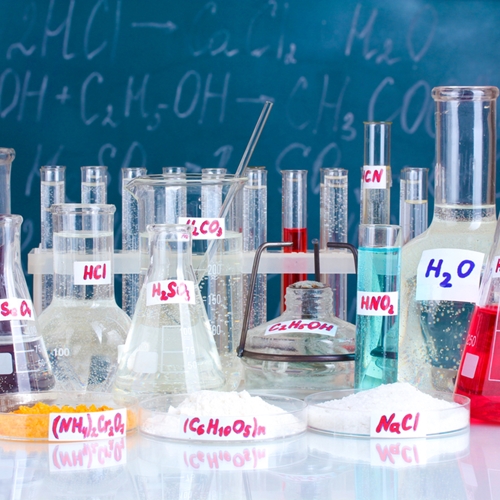
Industrial workplaces are often home to toxic chemicals that are used in manufacturing processes. Each chemical comes with its own risks. It is crucial that site managers and employees are aware of the hazards associated with chemicals and how to prevent accidents. Read on for information on two of the most dangerous chemicals to work with.
Ammonia
This substance is commonly found in commercial and household cleaners, as well as in the petroleum refining process, pharmaceutical production, as a refrigerant and a water disinfectant. As common as it is, though, ammonia presents significant threats to workers who come in contact with the substance on a regular basis.
Ammonia is a corrosive chemical that can cause damage to skin, eyes and lungs when handled improperly. Preventative measures that keep workers safe include wearing protective equipment and masks, but the first step to ammonia safety is education. All members of a team should understand the seriousness of ammonia exposure, and that proper care is of the utmost importance. The amounts and concentrations of ammonia should be tracked diligently, and ammonia should always be stored in cool, dry places. It should also be kept far from chlorine, metals, acids and oxidizers, which can combine with ammonia to create dangerous results.
Individuals working in environments with high levels of ammonia should wear air-supplying respirators and personal protective equipment to stay safe. If a leak does occur, an acrid odor will be released, signaling to employees that something has gone wrong. Gas leak detectors should be in place in order to ensure swift evacuations in case of a leak.
If ammonia is inhaled, individuals may experience coughing, wheezing and shortness of breath. If ingested, ammonia can burn the mouth, throat and stomach, and can have fatal results. In case of exposure, emergency services should be contacted immediately.
Nitric acid
This toxic chemical is often used to make fertilizer and explosives, and to clean metals. Handling this substance is dangerous and must be done with care, as nitric acid is highly corrosive and can cause serious damage to the human body.
To prevent accidental exposure, airborne chemical concentrations should be regularly monitored, and all employees who work with nitric acid should be instructed to wash their hands frequently, especially before eating, drinking, smoking or using cosmetics. Heavy gloves should be worn, as well as impact-resistant goggles when working with the fumes. In the case of corrosive chemicals such as nitric acid, face shields should be worn along with goggles as an added and necessary level of protection.
Eyewash stations and emergency showers should be present in the workplace in case of exposure. If nitric acid enters the eye, emergency services should be contacted immediately and an individual should use large amounts of water for at least 30 minutes to flush out the substance. Contact lenses should be taken out and an employee should lift both upper and lower lids to ensure proper washing.
If skin is contaminated, clothing should be removed quickly and the affected person should shower immediately to reduce risk of injury.
When a worker is exposed to nitric acid through inhalation, they should immediately be evacuated from the premises and an ambulance should be called at once. Because of the high levels of toxicity in nitric acid, a poisoned worker may need rescue breathing or CPR if their heart has stopped.
Although it is not combustible, nitric acid is a strong oxidizer and can fuel fires and heighten explosions. Industrial fire alarms and UV flame detectors should be installed to prevent disaster.
Industrial Safety News brought to you by Safety Systems Technology, Inc., leaders in fire and gas detection systems.